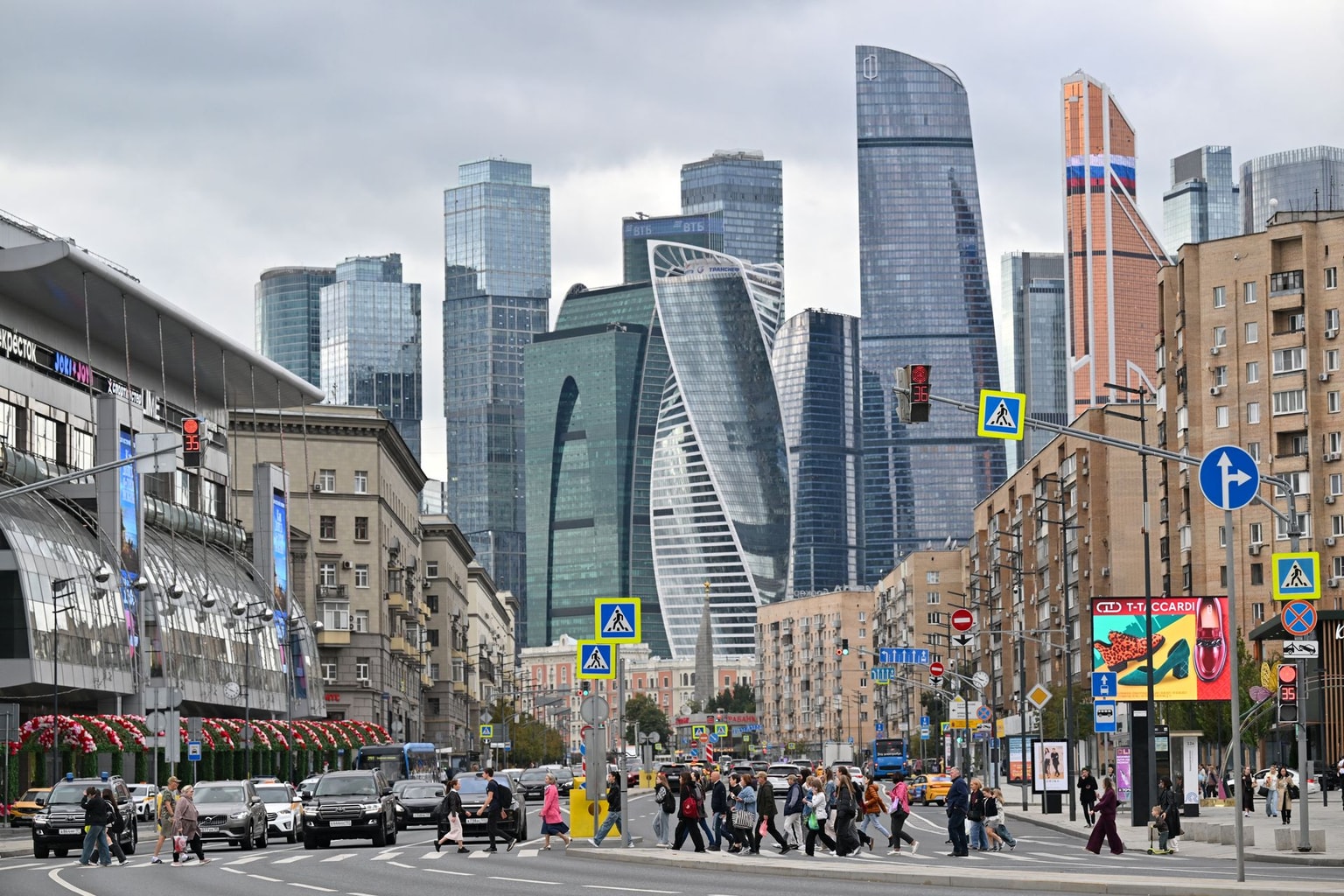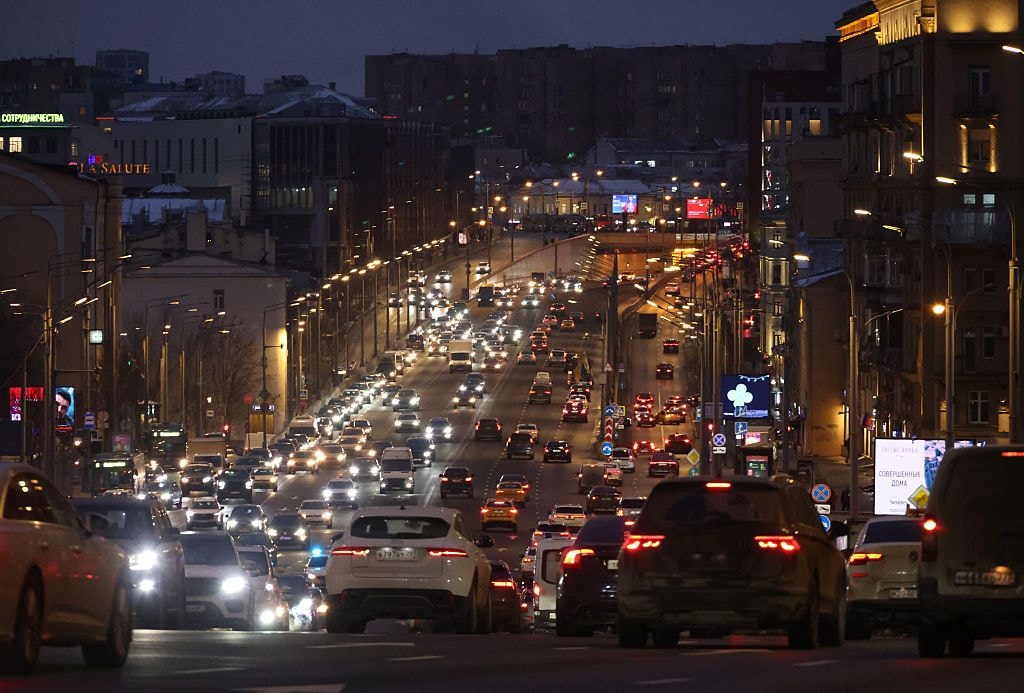Ukraine war latest: Ukraine reportedly strikes Russia with Storm Shadow missiles for first time

Key developments on Nov. 20:
- Ukraine strikes Russia with Storm Shadows for the first time, Bloomberg reports
- Biden approves delivery of anti-personnel mines to Ukraine in light of Russian gains in east
- Ukrainian drones allegedly strike Russian factories, weapons arsenal
- North Korean troops in Russia to be led by secrecy-shrouded general close to Kim Jong Un, WSJ reports
- Putin open to discussing Ukraine ceasefire with Trump, Reuters reports
- Russian officials threaten US over long-range strikes, allude to nuclear doctrine changes
Ukraine has struck targets inside Russia with British-supplied Storm Shadow missiles for the first time, Bloomberg reported on Nov. 20, citing a Western official familiar with the matter.
According to the source, the strikes were approved as a response to the presence of North Korean troops in Russia's Kursk Oblast, a sign of escalation by Russia.
Different versions of Storm Shadow missiles have a range of between 250 and 560 kilometers. Storm Shadows have been used to hit Russian military targets in Crimea, a sovereign Ukrainian territory illegally annexed by Russia.
The reported strikes come a day after Ukraine reportedly used U.S.-made ATACMS long-range missiles to attack Russian territory, following outgoing U.S. President Joe Biden's approval on Nov. 17.
That strike reportedly hit a Russian military facility in Karachev, Bryansk Oblast.

Biden approves delivery of anti-personnel mines to Ukraine in light of Russian gains in east
U.S. President Joe Biden has approved the provision of anti-personnel mines to Ukraine, Defense Secretary Lloyd Austin said on Nov. 20.
The decision is expected to help slow down Russia's advance in the east of the country.
The move follows the Biden administration's authorization of the use of U.S.-made long-range missiles to strike Russian territory. Kyiv has not officially confirmed the claims, but recent reports indicate Ukraine deployed U.S. ATACMS missiles in Russia's Bryansk Oblast.
The transfer of anti-personnel mines could be controversial, as it contradicts the Ottawa Convention, also known as the Anti-Personnel Mine Ban Treaty, which has been signed by more than 160 countries. Russia and the U.S. are not signatories to this initiative.
Since the beginning of the full-scale invasion, Washington has been supplying Kyiv with anti-tank mines, while Ukrainian forces have been looking for opportunities to obtain infantry mines over the past three years. Moscow has used anti-personnel mines without restriction at the front line, hampering the progress of the Ukrainian military.
Biden was reluctant to supply Ukraine with mines due to doubts in his administration and the risk to civilians. Yet Washington is now concerned about Russia's rapid advance in eastern Ukraine and sees the need to halt it, U.S. officials told the WP.
"Russia is attacking Ukrainian lines in the east with waves of troops, regardless of the casualties that they're suffering," one of the officials said.
"So, the Ukrainians are obviously taking losses, and more towns and cities are at risk of falling. These mines were made specifically to combat exactly this."
One U.S. official described the mines for Ukraine as "non-resistant," meaning that they self-destruct or lose battery power to render them inactive within days or weeks, reducing the danger to civilians, the WP reported.
The official said Kyiv had committed to not installing these mines in densely populated areas.
Ukrainian drones allegedly strike Russian factories, weapons arsenal
Ukraine reportedly targeted Russian facilities with drones as the Russian Defense Ministry claimed on Nov. 20 that air defense forces shot down 44 drones overnight.
Belgorod Oblast Governor Vyacheslav Gladkov said that drone wreckage damaged the premises of an enterprise in the town of Alekseevka on Nov. 19. Media reports identified the facility as an EFKO plant, officially a sauce manufacturer.
Separately, drone strikes were reported also in Voronezh Oblast, with local authorities claiming that five drones struck a civilian industrial facility, starting a fire.
The Voronezh and Belgorod oblasts lie at the border with Ukraine and are regularly targeted in cross-border drone strikes.
Andrii Kovalenko, head of Ukraine's National Security and Defense Council's counter-disinformation center, said that the EFKO plant also secretly produces cargo drones used by the Russian military.
The official said that Ukrainian drones also attacked the 13th Arsenal of the Main Missile and Artillery Directorate of Russia's Defense Ministry (GRAU) near Kotovo in Novgorod Oblast, some 680 kilometers (420 miles) from Ukraine's border.
According to Kovalenko, the arsenal stores critical military supplies, including artillery shells, multiple-launch rocket system (MLRS) missiles, Iskander and anti-aircraft missiles, and ammunition for various systems, including the Tor complex.
Russia's Defense Ministry claimed that 22 drones were shot down over Novgorod Oblast overnight.
The Kyiv Independent could not verify the claims.
These strikes come as Ukrainian President Volodymyr Zelensky announced plans on Nov. 19 to scale up domestic production of long-range drones and missiles.
As part of Ukraine's resilience plan, the country aims to manufacture at least 30,000 long-range drones in the coming year and establish a new technology center to enhance its defense capabilities.
Ukrainian forces struck a military arsenal in Karachev, Bryansk Oblast, overnight on Nov. 19, with some reports indicating that Kyiv deployed U.S. ATACMS missiles for the first time on Russian soil.
North Korean troops in Russia to be led by secrecy-shrouded general close to Kim Jong Un, WSJ reports
Colonel General Kim Yong Bok, one of the generals accompanying North Korean troops in Russia, is a mystery-shrouded figure close to dictator Kim Jong Un, The Wall Street Journal reported on Nov. 20.
Kim Yong Bok, officially the Deputy Chief of the Army General Staff, is expected to oversee the integration of North Korean troops into Russian forces, gain combat experience, and establish a framework for future deployments, the outlet reports.
A Ukrainian envoy listed him, along with Major General Sin Kum Cheol and Colonel General Ri Chang Ho, during a U.N. Security Council meeting on Oct. 30 as one of the generals commanding some over 10,000 North Korean troops in Russia.
Kim's role in Pyongyang's military has long been shrouded in secrecy. He previously commanded a special forces unit of 200,000 soldiers tasked with covert missions on the Korean Peninsula. His profile was elevated after Russian President Vladimir Putin visited North Korea in June, with reports identifying him as the No. 3 figure in the Korean People's Army, according to the Wall Street Journal's reporting.
In July 2020, Kim was seen alongside Kim Jong Un at a ceremony honoring military officials but largely disappeared from public view until recently.
This deployment coincides with North Korea's formalized mutual defense treaty with Russia, announced on Nov. 12. The agreement obligates the nations to assist each other in the event of an armed attack.
The development follows reports of initial clashes between Ukrainian forces and North Korean troops in Russia's Kursk Oblast. The Western countries denounced the deployment of North Korean troops as an escalation, with the U.S. reportedly responding by permitting Ukraine to launch ATACMS missiles against Russian and North Korean troops amassing in the region.
Putin open to discussing Ukraine ceasefire with Trump, Reuters reports
Russian President Vladimir Putin is willing to discuss a ceasefire in Ukraine with U.S. President-elect Donald Trump but rejects major territorial concessions and insists that Ukraine abandon plans to join NATO, Reuters reported on Nov. 20, citing five former and current Russian officials.
The Kremlin's terms reportedly include freezing the conflict roughly along current front lines and "dividing control" of eastern regions, including the Donetsk, Luhansk, Zaporizhzhia, and Kherson oblasts.
Moscow, which illegally declared annexation of these regions in September 2022, currently controls only 70-80% of them, with approximately 26,000 square kilometers (10,000 square miles) under Ukrainian control. Putin issued a demand in June that Ukraine must withdraw from the four regions completely before any ceasefire talks.
Russia currently occupies roughly a fifth of Ukraine's territory – including Crimea – as its forces continue to steadily advance in the east. Publicly, the Kremlin has rejected freezing the front line or any concessions on its part, with Putin saying any peace deal must be in Moscow's favor.
According to Reuters, Russian officials suggested that Moscow might consider withdrawing from smaller occupied areas in Ukraine's Kharkiv and Mykolaiv regions but emphasized that any deal must reflect "realities" on the ground.
Moscow remains firmly opposed to NATO membership for Ukraine or the presence of foreign troops on Ukrainian soil, the officials said. Additional demands could reportedly include limiting Ukraine's military size and guaranteeing unrestricted use of the Russian language.
Ukraine has rejected territorial concessions and said any peace talks should be based on its 10-point peace formula, which includes a Russian withdrawal and full territorial integrity and sovereignty. Officials acknowledged that some territories might be returned through diplomacy rather than military means.
Kyiv also said that NATO membership is the only way to prevent further Russian aggression.
Without a ceasefire, Russia will continue the war, Kremlin sources told Reuters. Kremlin spokesperson Dmitry Peskov called the U.S. authorization of ATACMS missiles a "very dangerous escalation."
Trump has positioned himself as a potential peace broker, claiming he could negotiate an end to the war. The contours of Trump's peace plan remain unclear, though media reports indicate it might entail postponing Ukraine's NATO membership for 20 years, freezing the front line, and establishing a demilitarized zone in the east manned by European troops.

Russian officials threaten US over long-range strikes, allude to nuclear doctrine changes
Russian Foreign Minister Sergey Lavrov said on Nov. 19 that Moscow "will respond accordingly" to Washington's permission for Ukraine to strike Russian soil with U.S. weapons.
Speaking at the G20 summit in Rio de Janeiro, Lavrov referred to Russia's updated nuclear doctrine, which permits nuclear retaliation for attacks by non-nuclear states supported by nuclear powers.
When asked during the summit if the U.S. had authorized Ukraine to use long-range weapons to target Russia, Lavrov responded, "I don't know whether it's true or not. We are focused on ensuring our security."
"We have already stated everything necessary to those considering this, officially. The president said it, and now it's confirmed in an official document," he said, according to TASS.
On Nov. 19, Russian President Vladimir Putin approved an updated nuclear deterrence policy that expands the conditions for a nuclear strike.
The revised doctrine outlines scenarios that could justify a nuclear strike, suggesting that this could include "aggression against the Russian Federation and its allies by a non-nuclear state with the support of a nuclear state" and large-scale non-nuclear attacks.











